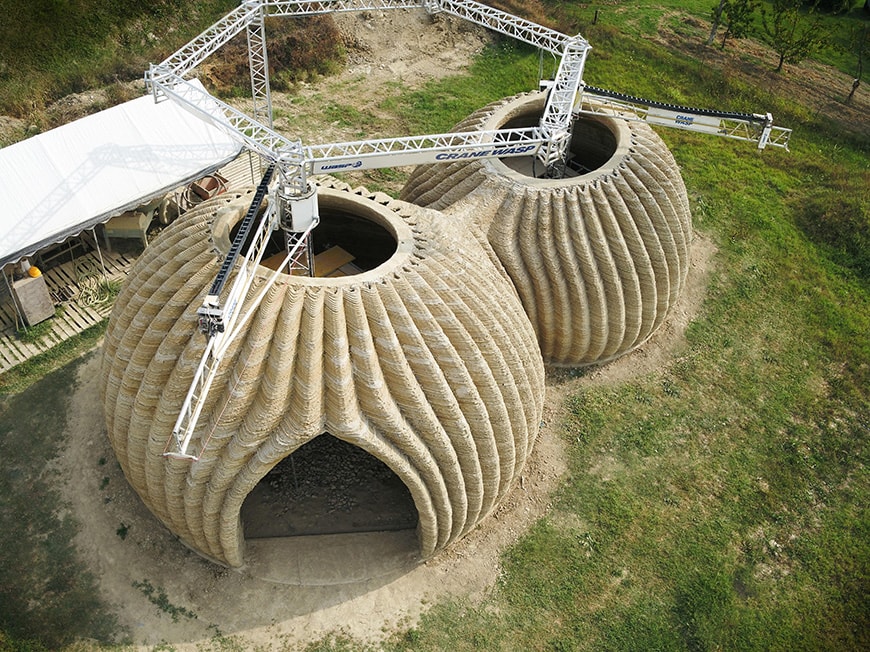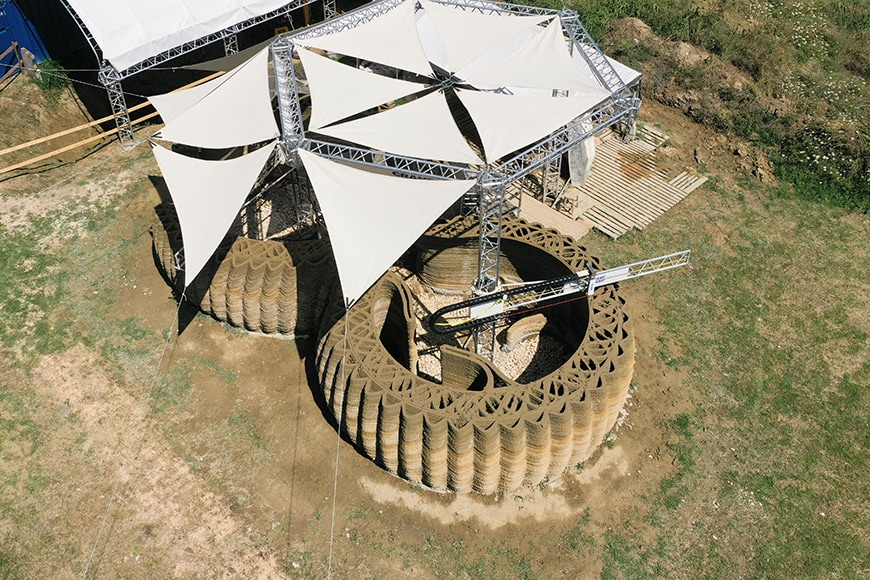3D-printed house in Italy is made from locally-sourced clay
Architectural design and management: MCA - Mario Cucinella Architects
Engineering and 3D printing construction: WASP
Images: courtesy of WASP
The TECLA prototype house in fall 2020. Image courtesy of WASP
A sustainable 3D-printed prototype house in Italy is made from locally-sourced clay
Originating from a collaboration between architect Mario Cucinella – MCA and 3D-printer manufacturer WASP, TECLA is a prototype eco-house built near Ravenna, northern Italy, entirely made by 3D printing a material based on locally-sourced clay.
TECLA (an acronym for “Technology and Clay”) is a habitat consisting of two interconnected housing units, each covered by a semi-spherical dome.
The units have been built using multiple Crane Wasp printing units operating simultaneously. Crane WASP is defined by the manufacturer as “a collaborative 3D printing system capable of printing houses” and can print various materials – such as earth-based materials, concrete mortar, and geopolymers – with a maximum speed of 300 mm/s and a maximum printing area of 50 sqm per unit.
The design of the habitat features two or more “cocoon-like” housing units, whose shape vaguely resembles that of a sea urchin, in which structure, insulation, and finishes coincide.
The thick raw earth walls of the units have a hollow structure consisting of several clay “waves”, which makes them at the same time relatively lightweight, resistant, and highly insulating.
About 200 printing hours are required to build each unit, which consists of 350 clay layers, each 12 mm thick.
The walls of the TECLA housing units are composed of several wave-shaped partitions each consisting of 350 clay layers. Images courtesy of WASP
According to WASP, the use of raw earth as the primary construction material will make it easier to create modular and zero-waste dwellings even in environments in which it would be difficult to transport other materials such as concrete or steel; furthermore, the company’s 3D-printing building technology and equipment will be available through a “Maker Economy Starter Kit” suitable for self-production.
Together with WASP, we aim at developing an innovative 3D-printed prototype for a habitat that responds to the increasingly urgent climate revolution and the needs of changes dictated by community needs. We need a paradigm shift in the field of architecture that gets closer to the needs of people, thus finding an answer for the “Earth” within the “earth”. A collaboration that becomes the union between empathic architecture and the application of new technologies. (Mario Cucinella).
The prototype habitat has been built by two WASP Crane units working in parallel.
Image courtesy of WASP.
Images of Tecla completed
All images courtesy of WASP (https://www.3dwasp.com/en/)
copyright Inexhibit 2024 - ISSN: 2283-5474










